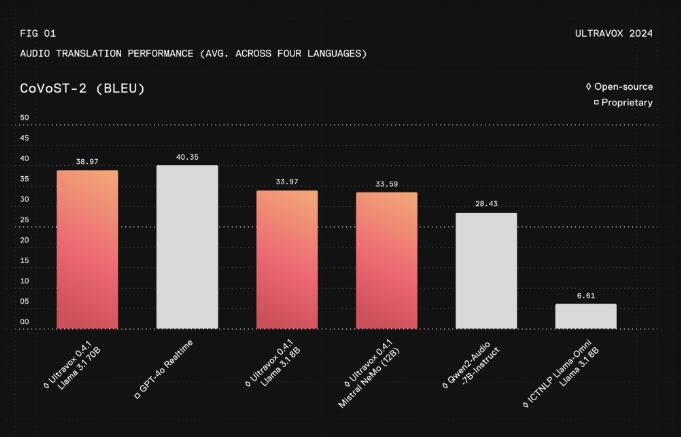Real-time interaction with AI is a major challenge in the field of artificial intelligence, especially in integrating multimodal information. Existing advanced models such as GPT-4, although significant progress has been made in language capabilities, still have shortcomings in real-time dialogue fluency, contextual understanding, and multimodal information processing, and the computing demand is huge, limiting its wide range. application. In order to solve these problems and promote the popularization of AI technology, Fixie AI launched Ultravox v0.4.1, an open source multimodal model series.
In the application of artificial intelligence, how to achieve real-time interaction with AI has always been a major challenge for developers and researchers. Among them, integrating multimodal information (such as text, images, and audio) to form a coherent dialogue system is particularly complex.

Despite some progress in advanced large language models like GPT-4, many AI systems still have difficulties in real-time dialogue fluency, context awareness, and multimodal understanding, limiting their effectiveness in practical applications. In addition, the computing requirements of these models also make real-time deployment extremely difficult without a large amount of infrastructure support.
To address these issues, Fixie AI has launched Ultravox v0.4.1, a multimodal open source model series designed to enable real-time conversations with AI.
Ultravox v0.4.1 has the ability to handle multiple input formats (such as text, images, etc.), and aims to provide an alternative to closed source models such as GPT-4. This version focuses not only on language competence, but also on achieving smooth, context-conscious conversations between different media types.

As an open source project, Fixie AI hopes to provide developers and researchers around the world with equal access to state-of-the-art conversation technology for applications ranging from customer support to entertainment.
The Ultravox v0.4.1 model is based on an optimized transformer architecture and can process multiple data in parallel. By using a technique called cross-modal attention, these models can simultaneously integrate and interpret information from different sources.
This means that users can show an image to the AI, ask relevant questions, and get informed answers in real time. Fixie AI hosts these open source models on Hugging Face, which facilitates developers’ access and experimentation, and provides detailed API documentation to facilitate seamless integration in real-world applications.
According to recent evaluation data, Ultravox v0.4.1 achieves a significant reduction in response latency, at about 30% faster than the leading business model, while maintaining considerable accuracy and contextual understanding. The cross-modal capability of this model makes it perform well in complex use cases, such as combining images with text in the healthcare field, or providing rich interactive content in the education field.
Ultravox’s openness promotes community-driven development, enhances flexibility and drives transparency. By easing the compute burden required to deploy the model, Ultravox makes advanced conversational AI more accessible, especially for small businesses and independent developers, breaking down barriers that have previously been created by resource constraints.
Project page: https://www.ultravox.ai/blog/ultravox-an-open-weight-alternative-to-gpt-4o-realtime
Model: https://huggingface.co/fixie-ai
Points:
Ultravox v0.4.1 is a multimodal open source model specially designed for real-time conversations by Fixie AI, designed to improve the interactive capabilities of AI.
This model supports multiple input formats, and uses cross-modal attention technology to achieve real-time information integration and response, greatly improving conversation fluency.
Ultravox v0.4.1 is 30% faster in response than the business model, and it lowers the threshold for high-end conversational AI through open source.
In short, Ultravox v0.4.1 provides new possibilities for real-time AI interactions with its open source, multimodal and fast response characteristics, and is expected to promote the application of artificial intelligence technology in more fields. Its openness and efficiency will benefit more developers and researchers, promoting the innovation and development of AI technology.